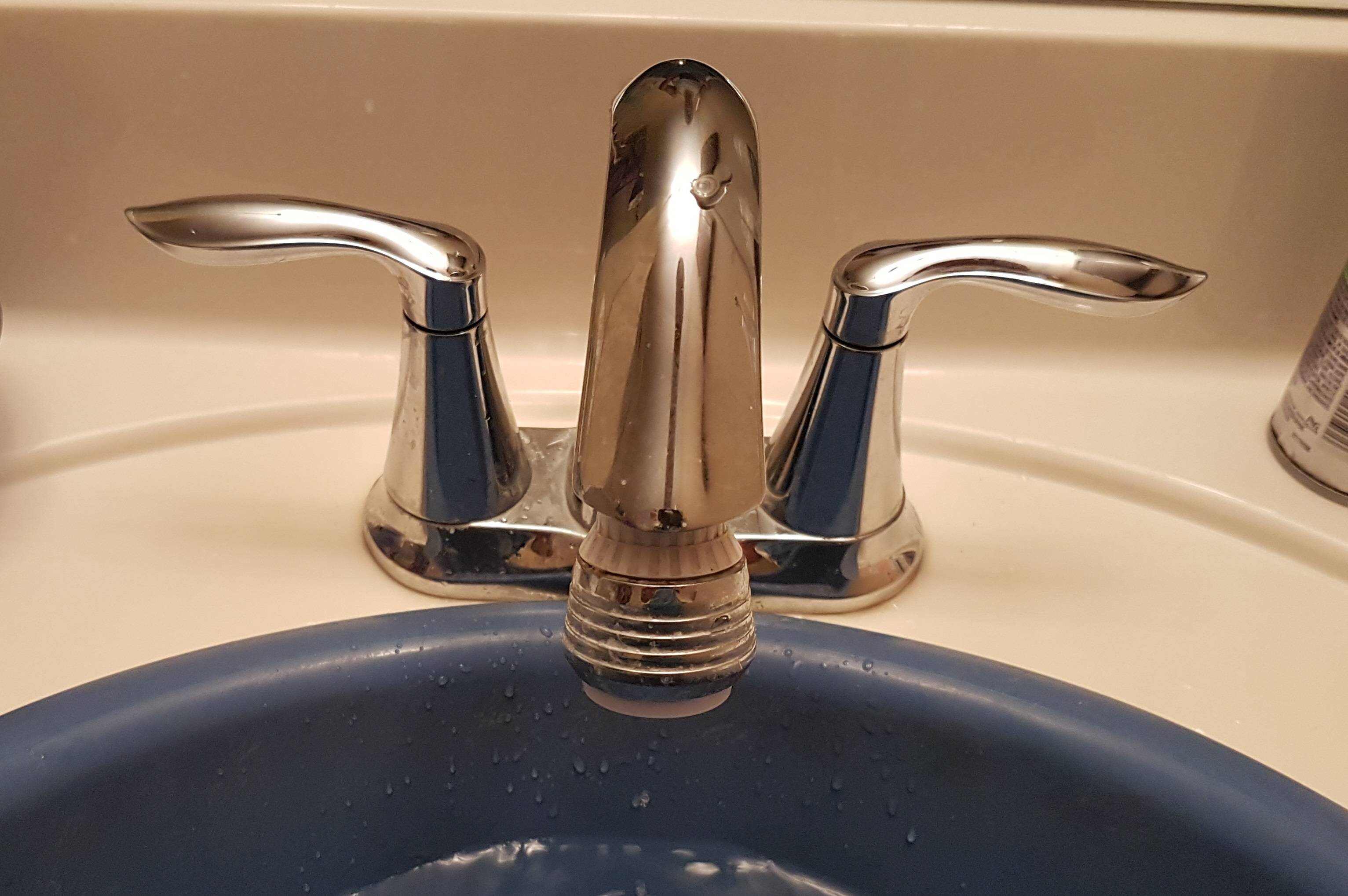Identifying the Type of Faucet Handle

Before you can remove a faucet handle without screws, you need to know what type of handle you have. There are three main types of faucet handles: lever, cross, and knob. Each type has unique features and requires a different approach to removal.
Identifying the Handle Type
The type of faucet handle you have is determined by its appearance and functionality.
- Lever handles are the most common type. They are shaped like a lever and are typically operated by pushing or pulling the lever up or down.
- Cross handles have two perpendicular arms that are turned to control the flow of water. They are typically found on older faucets.
- Knob handles are round or oval-shaped and are turned to control the flow of water. They are often found on older faucets or on faucets with a single handle for both hot and cold water.
Knowing the type of handle you have is crucial for determining the correct removal method.
Checking for Hidden Screws
If the handle doesn’t come off with a simple twist, it’s time to check for hidden screws. These screws are often concealed beneath decorative caps or escutcheons, making them less obvious.
Locating Hidden Screws
Hidden screws are usually found in specific areas depending on the faucet type. Here are some common locations:
- Handle Base: Look for a small, circular or rectangular cap at the base of the handle. These caps often conceal a screw or two that secures the handle.
- Side of the Handle: Some handles have screws located on the side, either near the top or bottom. These screws might be visible or covered by a small, removable cap.
- Behind the Handle: In some cases, the screws might be hidden behind the handle itself. You might need to gently pry the handle away from the faucet body to reveal the screws.
Accessing Hidden Screws
To access hidden screws, you’ll typically need a small screwdriver or a flathead pry bar.
- Screwdrivers: Use a screwdriver that matches the size and type of the screw. If the screw head is slotted, use a flathead screwdriver. If it’s Phillips, use a Phillips screwdriver.
- Pry Bar: If the screws are concealed under a cap, gently pry the cap off with a small, flathead pry bar. Be careful not to scratch or damage the faucet finish.
Removing the Handle without Screws: How To Remove Bathroom Faucet Handle Without Screws
If you’ve determined your faucet handle doesn’t have visible screws, you’ll need to explore alternative methods for removal. Understanding the type of mechanism used to secure the handle is crucial.
Identifying the Mechanism
The most common types of handle-securing mechanisms without screws are:
- Friction Fit: This type relies on a tight fit between the handle and the stem. The handle is held in place by friction, often with a small retaining clip or ring.
- Snap-On: Snap-on handles often have a hidden release mechanism. This might involve a small button or lever on the underside of the handle, or a spring-loaded clip that holds the handle in place.
Techniques for Loosening the Handle, How to remove bathroom faucet handle without screws
Once you’ve identified the mechanism, you can employ the following techniques to loosen the handle:
- Pliers: If the handle is friction fit, carefully use pliers to grip the handle firmly and gently twist it counter-clockwise. Avoid excessive force, as you could damage the handle or the faucet stem.
- Wrench: For handles with a nut or ring, a wrench can be used to loosen the handle. Be sure to choose a wrench that fits the size and shape of the nut or ring. Use a gentle, twisting motion to loosen the handle.
- Lever: If the handle has a hidden release button or lever, locate and press or pull it while gently twisting the handle. This should release the handle from its holding mechanism.
Troubleshooting Common Issues

Even with the right tools and techniques, removing a faucet handle without screws can present challenges. This section will discuss common problems you might encounter and provide solutions to overcome them.
Stuck or Difficult to Remove Handles
A stuck handle is a common issue. This can happen due to several reasons:
- Corrosion or Mineral Buildup: Over time, mineral deposits or corrosion can form around the handle’s base, preventing it from turning freely. This is particularly common in areas with hard water.
- Worn-out O-Rings or Gaskets: The O-rings or gaskets that seal the handle to the stem can become worn or damaged, causing friction and making it difficult to remove.
- Tightened Stem: The stem, which connects the handle to the valve, may have been overtightened, making it difficult to loosen the handle.
- Deformed or Damaged Handle: A deformed or damaged handle can also hinder removal, especially if the handle’s shape prevents it from turning smoothly.
To address these issues, you can try the following solutions:
- Apply Lubricant: Use a penetrating oil or lubricant like WD-40 to loosen the handle. Apply it around the base of the handle and allow it to penetrate for a few minutes before attempting to remove it.
- Use a Handle Puller: A faucet handle puller is a specialized tool designed to remove stuck handles. It typically features two arms that grip the handle and a central screw that applies pressure to loosen it. This tool is particularly useful for handles that have been corroded or have worn-out gaskets.
- Tap Gently: If the handle is stuck due to corrosion or mineral buildup, gently tapping the base of the handle with a rubber mallet can help loosen it. Avoid using excessive force as it could damage the handle or faucet.
- Check the Stem: If the stem appears to be overtightened, use a wrench to loosen it slightly. This may make it easier to remove the handle. However, proceed with caution, as over-loosening the stem could cause leaks.
Safety Precautions

Working with plumbing fixtures, even seemingly simple tasks like removing a faucet handle, can involve potential hazards. It’s crucial to prioritize safety to prevent injuries and ensure a smooth experience.
Using Protective Gear
Wearing protective gear is essential when handling tools and working with plumbing fixtures. This helps minimize the risk of injury from sharp edges, potential spills, or other unforeseen circumstances.
- Gloves: Wear sturdy work gloves to protect your hands from cuts, scrapes, and potential exposure to chemicals. Look for gloves with good grip and dexterity for handling tools comfortably.
- Eye Protection: Safety glasses or goggles are vital to shield your eyes from debris, splashes, and flying objects. Choose glasses that fit snugly and offer adequate protection.
Handling Tools Safely
Proper tool handling is critical to prevent injuries. Here are some key safety tips:
- Inspect Tools: Before using any tools, inspect them for damage or defects. Ensure they are in good working condition and appropriate for the task at hand.
- Use the Right Tools: Use tools specifically designed for the job. Avoid using tools that are too large or too small, as this can lead to slips or damage to the fixture.
- Keep Tools Sharp: Sharp tools are safer than dull ones. Dull tools require more force, increasing the risk of slipping and injury.
Avoiding Injuries
Here are some additional safety precautions to consider:
- Be Mindful of Sharp Edges: Plumbing fixtures often have sharp edges. Handle them with care and wear gloves to prevent cuts.
- Avoid Over-Tightening: Over-tightening nuts and bolts can damage the fixture. Use moderate pressure and tighten until snug.
- Work in a Well-Lit Area: Proper lighting helps you see what you’re doing and reduces the risk of mistakes or injuries.
- Be Aware of Water Pressure: Before working on a faucet, turn off the water supply to avoid accidental flooding.
